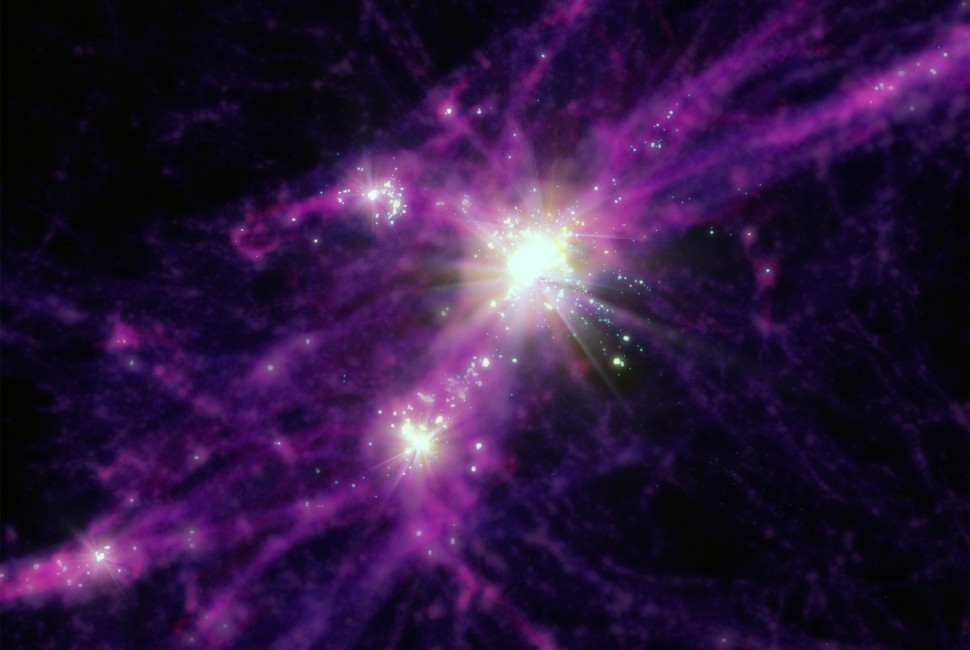Artist conception of early starbursting galaxies. Stars and galaxies are shown in the bright white points of light, while the more diffuse dark matter and gas are shown in purples and reds. When scientists viewed the James Webb Space Telescope’s (JWST) first images of the universe’s earliest galaxies, they were shocked. The young galaxies appeared too bright, too massive and too mature to have formed so soon after the Big Bang. The startling discovery even caused some physicists to question the standard model of cosmology, wondering whether or not it should be upended.
Using new simulations, a Northwestern University-led team of astrophysicists including CIERA Postdoctoral Fellow Guochao Sun Professor Claude-André Faucher-Giguère now has discovered that these galaxies likely are not so massive after all. Although a galaxy’s brightness is typically determined by its mass, the new findings suggest that less massive galaxies can glow just as brightly from irregular, brilliant bursts of star formation. Not only does this finding explain why young galaxies appear deceptively massive, it also fits within the standard model of cosmology.
Read the full CIERA news story here.

Credit: Aaron M. Geller, Northwestern, CIERA + IT-RCDS
- Science

